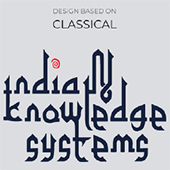Some of the exercises and the exposure content were sent to class XII students for participatory evaluation. Here are some of the insights I got from this evaluation:
1. The language of the exposure content is a bit tough at some places, and takes multiple reads to figure out, especially the topics on abstraction and metaphorisation. The provided pictures are helpful for understanding such difficult topics. After getting this insight, I added more descriptive pictures to the exposure content.
2. Some exercises could be better worded to get the intended result from the students. For example, when writing a ’description’ for Exercise 1 (see Figure 43), students plainly described what they saw, instead of speculating and taking more risks.
3. The results clearly show that students know what abstraction means. However, as can be seen in the works of two different students in Figure 44, different mediums can lead to different results, making evaluation harder. To keep the playing field fair and focus the evaluation just on the rubrics provided in the evaluation matrix, I locked the medium, such that only pencils or certain colours could be used for such exercises.
4. Different students can have different approaches when executing the same problem. As can be seen in Figure 45, one student used simple abstract shapes while the other took a more realistic approach. Such situations would reflect in the grading which would be done according to rubrics. However, I have made the language as clear as possible to minimise such a possibility.
5. Exercise 5, where the students had to paste 5 leaves according to hierarchy, had to be reworded because students completely misunderstood the assignment, pasting leaves which matched the shape of the letter instead, as can be seen in Figure 46. In the next iteration, the steps and guidelines were made simpler and clearer.

Student 1

Student 2
Figure 43: Exercise 1 done by the students

Student 1

Student 2
Figure 44: Exercise 2A done by the students

Student 1

Student 2
Figure 45: Exercise 2B done by the students

Figure 46: Exercise 5 done by students

